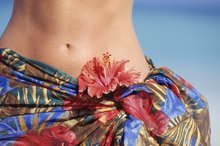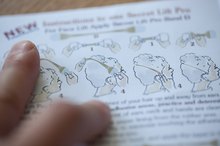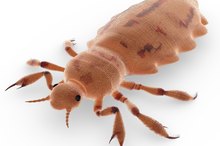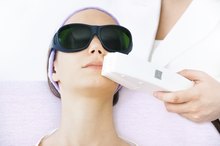What does fact checked mean?
At Healthfully, we strive to deliver objective content that is accurate and up-to-date. Our team periodically reviews articles in order to ensure content quality. The sources cited below consist of evidence from peer-reviewed journals, prominent medical organizations, academic associations, and government data.
The information contained on this site is for informational purposes only, and should not be used as a substitute for the advice of a professional health care provider. Please check with the appropriate physician regarding health questions and concerns. Although we strive to deliver accurate and up-to-date information, no guarantee to that effect is made.
How to Get Rid of Facial Hair Caused By Minoxidil
Minoxidil is a drug found in hair regrowth products like Rogaine. According to MayoClinic.com, it is used to treat certain types of hair loss in adults by increasing the amount of hair growth on your scalp. However, one of this medication’s side effects can be an increase in facial hair. You can use at-home treatments to get rid of this temporary facial hair.
Always apply minoxidil as directed in the packaging instructions, and talk to your doctor about the side effects your experience. She will determine whether or not you can continue to use minoxidil 1.
Wash your face with a gentle, non-irritating cleanser to remove dirt and oil and clear out your pores. This will enhance the efficacy of your subsequent hair removal. Use lukewarm water and smooth your cleanser over your skin. Wash it off, and pat dry.
Nioxin Side Effects
Learn More
Use a sugar hair removal product to wax off any unwanted hair. “More” notes that this method tends to be less painful than regular hot wax. The magazine also states that this will help your face remain hair-free for up to a month and recommends using a roll-on product for easier application. Heat the product according to the package instructions and apply it the areas you want to remove hair from. Place the included cloth strips over the wax and in the direction of your hair’s growth, and then take them off with a quick motion. Repeat until your facial hair is gone.
Wash off any residue from the sugar wax, dry your face and apply a soothing lotion or cream to help combat irritation. Look for products with ingredients like shea butter and jasmine, which “Allure” states will reduce facial redness and calm your skin. Apply a thin layer after hair removal and as needed throughout the day.
Tips
When you apply your minoxidil product, keep it off your face by wrapping your hairline with cotton, says “More.” The magazine notes that people may experience facial hair growth while using this product because they allow it to touch their faces. Wash your hands thoroughly right after you apply the minoxidil, and keep the cotton on until the product is dry.
Warnings
Seek medical help if you develop an allergic reaction to any product or if you have a sudden increase in facial hair growth, as these responses could be signs of a more serious medical condition.
Do not overheat the sugar wax, as this can cause burns and hyperpigmentation.
Related Articles
References
- Mayo Clinic: Minoxidil (Topical Route)
- TeensHealth from Nemours. Hair removal. Updated August 2016.
- National Organization for Rare Disorders. Trichotillomania.
- NIH MedlinePlus. Depilatory poisoning. Updated April 9. 2020.
- Michigan Medicine. Electrolysis for removing hair. Updated October 30, 2019.
- American Academy of Dermatology. Laser hair removal: FAQs.
- USFDA. Vaniqa™. Updated July 27, 2000.
- Hamzavi I, Tan E, Shapiro J, Lui H. A randomized bilateral vehicle-controlled study of eflornithine cream combined with laser treatment versus laser treatment alone for facial hirsutism in women. J Am Acad Dermatol. 2007;57(1):54-9. doi:10.1016/j.jaad.2006.09.025
- Hamzavi, I., Tan, E., Shapiro, J., Lui, H. (2007). A randomized bilateral vehicle-controlled study of eflornithine cream combined with laser treatment versus laser treatment alone for facial hirsutism in women. J Am Acad Dermatol, Jul, 57, 1, 54-9.
- Wanitphakdeedecha, R., Alster, T.S. (2008). Physical means of treating unwanted hair. Dermatol Ther, Sep-Oct, 21, 5, 392-401.
Writer Bio
Lynne Sheldon has over 12 years of dance experience, both in studios and performance groups. She is an avid runner and has studied several types of yoga. Sheldon now works as a freelance writer, editor and book reviewer. She holds a Bachelor of Arts in English and art history from Boston University and recently completed her Master of Fine Arts in writing from Pacific University.









